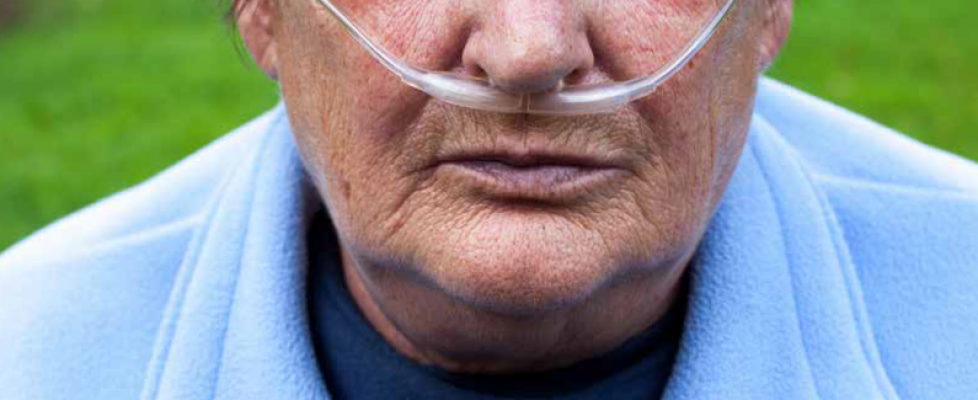Simplifying the Management of Complex Care Patients
Simplifying the Management of Complex Care Patients
It’s complicated…
Having a chronic illness is tough. Having multiple chronic conditions is even tougher. Add financial, emotional, mobility or behavioral factors, and it can seem insurmountable.
People who struggle with multiple ongoing health challenges (like diabetes, congestive heart failure, chronic obstructive pulmonary disorders, etc.) have complex needs and are by far the heaviest users of emergency departments, in-patient facilities, and urgent care centers. In fact, complex care patients account for roughly ⅔ of every dollar spent in the health care system today.
As populations age, the number of people being diagnosed with more than one chronic condition is increasing rapidly, to a point that is already showing signs of being unsustainable.
Finding innovative solutions for cost reduction and increased scale without compromising quality and continuity is one of the biggest challenges in healthcare today.
TRANSFORMING DELIVERY
By treating the patient as a whole, rather than focusing on each condition individually, a new model of care delivery is showing significant benefits across North America for care providers, insurers and facilities and perhaps most importantly, for patients themselves.
Many organizations are moving away from traditional care models where each provider works in isolation to an integrated team approach that coordinates all kinds of care and resources for complex needs patients. These teams place the patient at the center of the Circle of Care and include helping clients who’s greatest needs are not purely medical, but that often includes challenges related to mental health, housing supports, financial or mobility issues.
PATIENT-CENTRIC COORDINATED CARE
While integrated care teams are making a difference by bringing different specialties together they are also creating new challenges in communication, information sharing and scalability. Many providers are realizing the value of digital health technologies to provide cohesive and cost effective care for their complex patients.
Digital health technology is no longer just for patients and physicians who are on the cutting edge. More accessible and pervasive than ever, mobile applications are making it easier to securely store, share, and update patient information— wherever you are in the world.
Ease of use and simplified user interfaces mean that with a simple touch screen, patients can connect with care providers from the comfort of home. Even those with cognitive impairments or mobility issues can connect with members of their circle of care.
It’s this integrated way of caring for people with complicated health or social support needs that aTouchAway was designed to address.
From basic communication to sophisticated workflows, the Aetonix remote patient management platform was purpose-built to manage the needs of all the various players in care provision.
COMMUNICATE & SHARE
The aTouchAway platform enables care providers from virtually any specialty to connect with patients more frequently than they would be able to with face-to-face appointments. Communications via video conferencing afford additional context to a patient’s condition that written or faxed documents can’t.
Barrier-free communication across different providers minimizes duplication of effort, streamlines information sharing and ensures up-to-date data for timely decision making or interventions if required.
EDUCATE, EMPOWER AND ENGAGE
Patients who understand their conditions and the behaviors they need to employ to maintain their own wellness feel empowered and more in control. Being connected to the people familiar with their challenges helps prevent feelings of isolation and promotes compliance with self-care activities. Enabling direct engagement with the people providing their care, reassures patients and can prevent unnecessary trips to the hospital or urgent care clinic.
ACTIVE VS. REACTIVE MANAGEMENT
Consistent monitoring and frequent check-ins play an important role in complex care but can also create challenges for patients and providers. If a patient is struggling financially or doesn’t have ready access to transportation, just getting their blood pressure measured and shared with their care team can introduce potential for confusion and can trigger stress and anxiety.
Integrating common home health monitoring devices with aTouchAway removes some of these barriers to active patient management. Patients can measure and transmit results of various indicators (i.e., blood pressure, oxygen saturation levels, etc.) in real-time, either during a virtual visit, at predetermined intervals or can enter them manually anytime.
COORDINATED CARE PLANNING
Connecting multi-sector professionals (primary care physicians, nurse practitioners, social or personal support workers, therapists, etc.), provides an environment for true collaboration. Individualized planning based on each patient’s unique needs and abilities is designed, shared, and adjusted by care team members. Care plan templates are easily customized for your organization’s needs.
Care plans can be developed with a holistic picture of the patient’s unique needs, health goals, and treatments. Reminders and alerts can be easily set up to provide notifications for anything; from medication reminders to instructions for self-care activities. Each patient’s care plan is designed, shared, and securely stored in one place for authorized members to access.
AUTOMATE REPETITIVE TASKS
aTouchAway includes a powerful, yet easy to use, workflow engine. Workflows are based on logical steps and streamline any number of functions that currently require manual intervention.
Anyone in the circle of care can be included at any point along a workflow timeline, making it ideal for automating routine tasks like consent forms or pushing out self-assessment requests.

